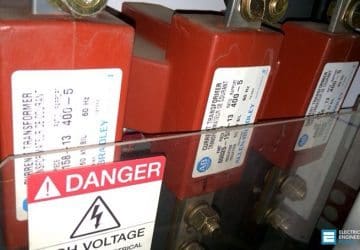Shielding and Grounding Practices for Control Cables in EHV Substations
For several years, the increased application of solid-state devices for protective relaying and control and for electronic equipment, such as audio tones, carrier and microwave equipment, event recorders, and supervisory control equipment, in EHV substations has resulted in many equipment… Read more
May 20, 2016 | By Edvard Csanyi

Does transformer hum make you nervous? It does me.
Noise is caused by magnetostricition (changes in shape) of the core laminations while the transformer is energized. Transformers emit a low-frequency, tonal noise that people living in their vicinity experience as an irritating “hum” and can hear even against a… Read more
May 04, 2016 | By Edvard Csanyi

3 Designs of DC Distribution Systems In Power Substations
The method of connection of the battery, battery charger, and DC distribution systems depends on the duty, the type or load, and whether the system needs to be duplicated or whether duplicate chargers are required. One typical example for a… Read more
Apr 20, 2016 | By Edvard Csanyi
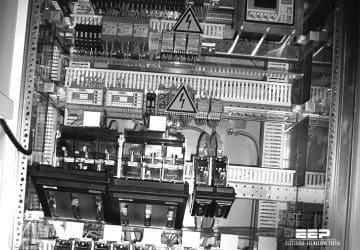
10 Factors To Consider When Specifying Transformers
There are many factors that influence final specification of a transformer. However, the following ten factors MUST be considered when specifying transformers. Let’s name these ten factors: Kilovoltampere (kVA) Rating Voltage Ratings, Ratio, and Method of Connection (Delta or Wye) Voltage… Read more
Mar 28, 2016 | By Edvard Csanyi

Matching transformers for parallel operation
The following rules must be obeyed in order to successfully connect two or more transformers in parallel with each other: The turns ratios of all of the transformers must be nearly equal. The phase angle displacements of all of the… Read more
Mar 16, 2016 | By Edvard Csanyi

Defining size and location of capacitor in electrical system (1)
Type of Capacitor Bank as per Its Application: Fixed type capacitor banks Automatic type capacitor banks Types of APFC – Automatic Power Factor Correction Type of Capacitor as per Construction Selecting Size of Capacitor Bank Selection of Capacitor as per… Read more
Mar 04, 2016 | By Jignesh Parmar

Practical Considerations of LV/MV Private Substations
Private substations can often be considered as terminal type substations, i.e. substations where the MV line ends at the point of installation of the substation itself. They belong to the user and can supply both civil users (schools, hospitals, etc.)… Read more
Mar 04, 2016 | By Edvard Csanyi
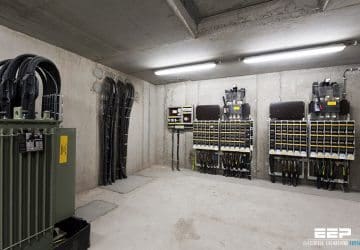
How to determine the best location for earth electrode
A good, low-resistance earth electrode depends upon a low-resistivity soil in a spot where you can drive in your electrodes. There are two approaches to picking your location: Drive rods in various locations to such depths as may be required… Read more
Feb 24, 2016 | By Edvard Csanyi

5 conditions for perfect parallel operation of single phase transformers
In perfect parallel operation of two or more transformers, current in each transformer would be directly proportional to the transformer capacity, and the arithmetic sum would equal one-half the total current. In practice, this is seldom achieved because of small… Read more
Jan 23, 2016 | By Edvard Csanyi
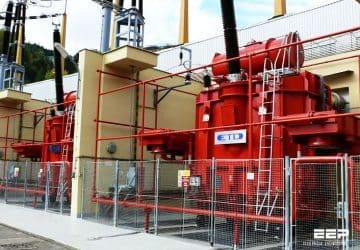
Underground substations – Out of sight, out of mind
Underground substations help to bring high voltage electricity directly into the city center. The stations are environmentally friendly, almost unnoticeable, and have none of the planning problems encountered by surface-built solutions. Building new transformer substations in inner-city zones or expanding… Read more
Jan 09, 2016 | By Edvard Csanyi

Electrical Distribution Architecture In Water Treatment Plants
For both drinking water and wastewater treatment, 4 different sizes of plants have been distinguished. The size of plants can be expressed in quantity of treated water per day, or in corresponding number of inhabitants. Four different types of (waste)… Read more
Jan 04, 2016 | By Edvard Csanyi
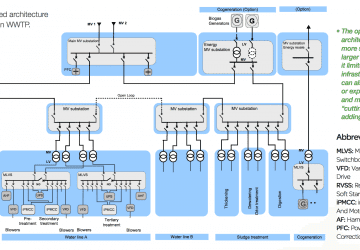
5 good circuit schemes to avoid HV substation outage
High voltage substations are points in the power system where power can be pooled from generating sources, distributed and transformed, and delivered to the load points. Substations are interconnected with each other so that the power system becomes a meshed… Read more
Jan 02, 2016 | By Edvard Csanyi

The good ventilation of switchgear and transformer rooms
In order to design a good ventilation of switchgear and transformer rooms, the air in the room must meet various requirements. The most important is not to exceed the permissible maximum temperature. Limit values for humidity and air quality, e.g…. Read more
Dec 18, 2015 | By Edvard Csanyi

The basics of primary medium voltage switchgear
Primary medium voltage switchgear represents an important part within the primary distribution substation functionality. The switchgear works as a connection node between the outgoing distribution feeders and the in-feeding power transformers. The most common construction with the switchgear is an… Read more
Dec 14, 2015 | By Edvard Csanyi

Learn How To Specify Current Transformers
Current transformers are used to supply information to the protective relays and/or current, power and energy metering “instruments”. For this purpose they must supply a secondary current proportional to the primary current flowing through them and must be adapted to… Read more
Dec 05, 2015 | By Edvard Csanyi
